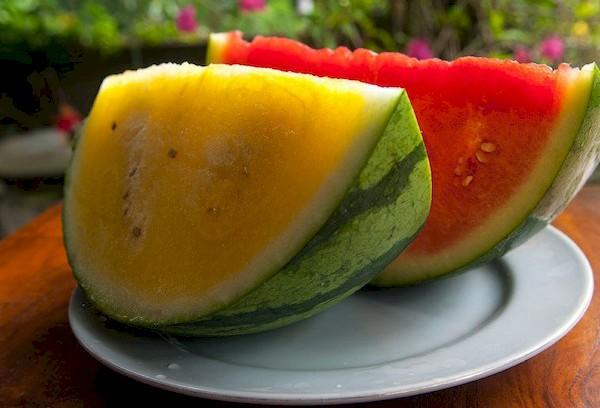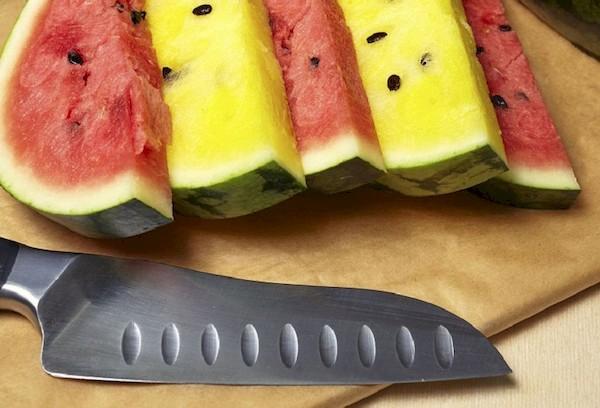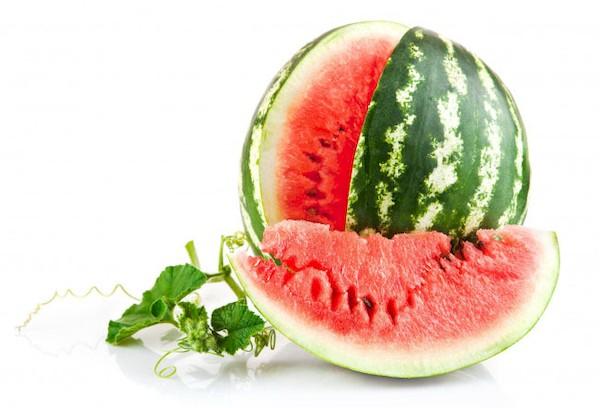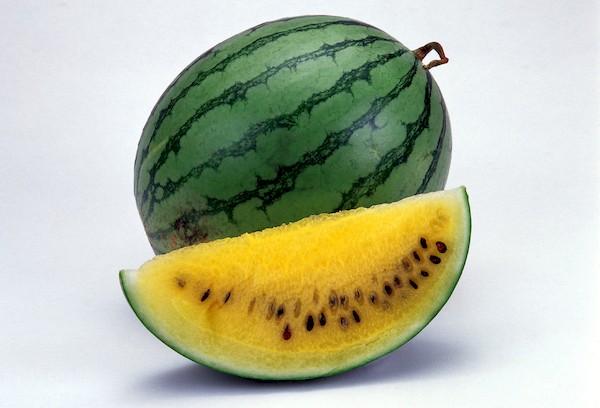What is the difference between yellow and red watermelon?
For many centuries, the red color of watermelon pulp was perceived as a sign of ripeness and sweet taste. The breeding of yellow-fleshed varieties by scientists broke the pattern. The counters are bursting with colorful fruits, which cannot but arouse interest. A natural question arises: what is the difference between a yellow watermelon and a red one? The difference is not only in color. Yellow varieties are usually smaller, thin-skinned, honey or tropical fruit flavored, contain beta-carotene, and are more expensive.
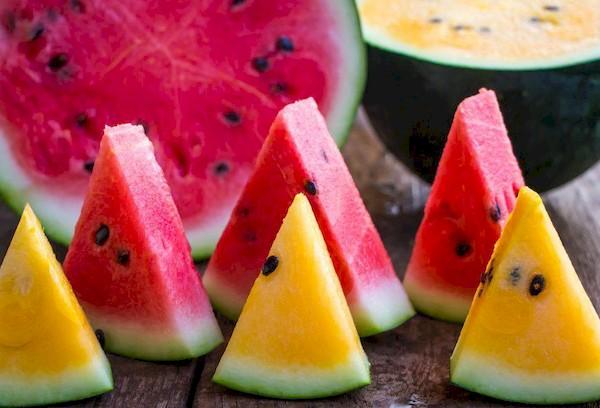
How to distinguish a yellow watermelon from a red one?
From the outside, yellow and red watermelon look exactly the same - the same shape, size, striped peel, tail. It is impossible to distinguish them without cutting them. The difference is noticeable when cutting and tasting.
What are the differences between a yellow watermelon and a red one:
- sunny color of the pulp;
- usually sweeter, honey-like;
- costs more;
- contains beta-carotene;
- less lycopene in the composition.
Comparison in the table:
| Yellow watermelon | Red watermelon | |
| Weight | usually light weight up to 3 kg | 2-30 kg |
| Form | from round to oblong | |
| Peel color | light green or dark green stripes, less often a dark green crust | striped, plain dark or light green or yellow |
| With or without bones | seedless or with small black seeds | with seeds and seedless varieties |
| Taste qualities | sweet, honey, maybe with a flavor of pumpkin, pineapple, mango, lemon, nutmeg (depending on the variety) | sweet, watermelon |
| Application | fresh, fruit salads, smoothies, summer desserts | fresh and fried, fruit salads, drinks, watermelon honey |
| Popular varieties | Lunar, Golden Grace F1, Prince Hamlet F1, Janusik, Dragon Egg | Ogonyok, Ultra Early, Crimson Sweet, Sorento F1, Skorik, Gift of the Sun, Suga Baby |
| Price | from 60 rub. for 1 kg | from 40 rub. for 1 kg |
Yellow-fleshed varieties often, but not always, have thinner, softer skins. They tolerate transportation less well and are not stored for long. Therefore, their price is higher than average.
What you need to know about red watermelons?
Common red-fleshed varieties have this color due to lycopene. It is an antioxidant and pigment. Lycopene is found in tomatoes, guava, persimmon, melon, pumpkin and some other foods.
The lycopene in red watermelons protects the body from oxidative stress, reducing the likelihood of cancer, inflammatory and cardiovascular diseases.
Few people know that the red pulp is the result of centuries of selection. Red-fleshed varieties are descended from almost colorless yellowish wild counterparts. Watermelons were first grown in Africa about 5,000 years ago. Through crossbreeding, the berries were improved in texture, sweetness and color. The lycopene content in the hybrids gradually increased, and they became more and more pink and red. Modern species are very different from their wild ancestors in both taste and appearance.
Good to know. The ancestor of all watermelons - wild watermelon has a golden color, fresh or even bitter flesh. It is about the size of a tennis ball and still grows in northeastern Africa. Local tribes use the fruits for moisture reserves.
Yellow watermelons - what are they?
Today there are more than 1000 varieties of watermelons in any color you want: pink, black, white, and of course, yellow. The yellow-fleshed berry variety was first bred in Thailand.Breeders crossed wild watermelon with sweet red one. Soon, “yellow varieties” began to be produced all over the world: in Russia, Spain, and other countries.
The Lunny variety has gained particular popularity in Russia. It was bred at the Astrakhan Research Institute of Irrigated Vegetable and Melon Growing in 2006.
The lack of lycopene in yellow fruits is compensated by the content of beta-cartoene, which is no less powerful an antioxidant than lycopene. Beta-carotene is partially converted into vitamin A.
Also an antioxidant:
- protects skin from premature aging, dryness;
- supports eye health;
- helps strengthen the immune system;
- improves attention and memory;
- promotes tissue regeneration;
- reduces the risk of developing cancer.
Question answer
How can you tell if a yellow watermelon is ripe?
When choosing, experts advise following the same principles as with the usual red watermelons: a ripe fruit should have a bright, contrasting rind, a yellow spot where it lay on the ground, as well as a dry tendril and stalk. If the specimen is ripe, it will crunch when squeezed. If you cut it, inside you will find sweet, sugary flesh of a rich yellow color.
Is yellow watermelon natural or GMO?
This is a natural product. Yellow color is natural for melons. These varieties do not contain GMOs and are obtained as a result of crossing.
Which is healthier?
Watermelons of all types contain a large amount of water and 5-13% sugars. They are useful for quenching thirst, intestinal health - preventing discomfort, ulcers, constipation and dehydration. The difference in the content of vitamins and microelements is insignificant and is not decisive. Yellow watermelons are healthier for people with lycopene intolerance (extremely rare).
Today, most people have ceased to perceive yellow watermelons as a curiosity and are used on an equal basis with red ones. They look great together: simply sliced, in salads, in various desserts. Bright red and sunny yellow are the colors of summer that lift your spirits. Apart from the color of the flesh, not every person will notice the difference between them. If you eat a slice of watermelon with your eyes closed, you won’t immediately be able to tell whether it’s red or yellow. It must be remembered that the taste, size and other characteristics of the fruit largely depend on the variety.
